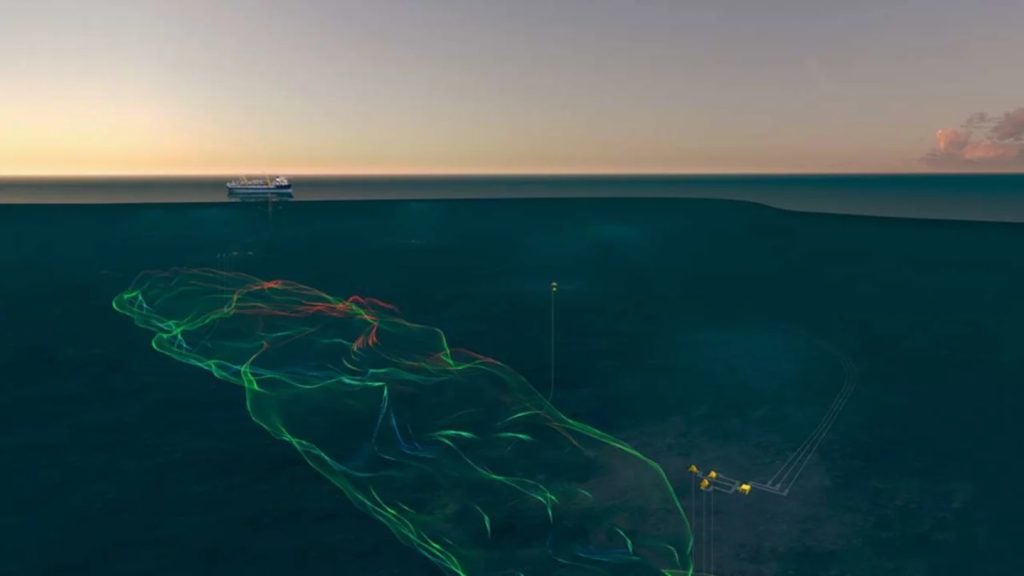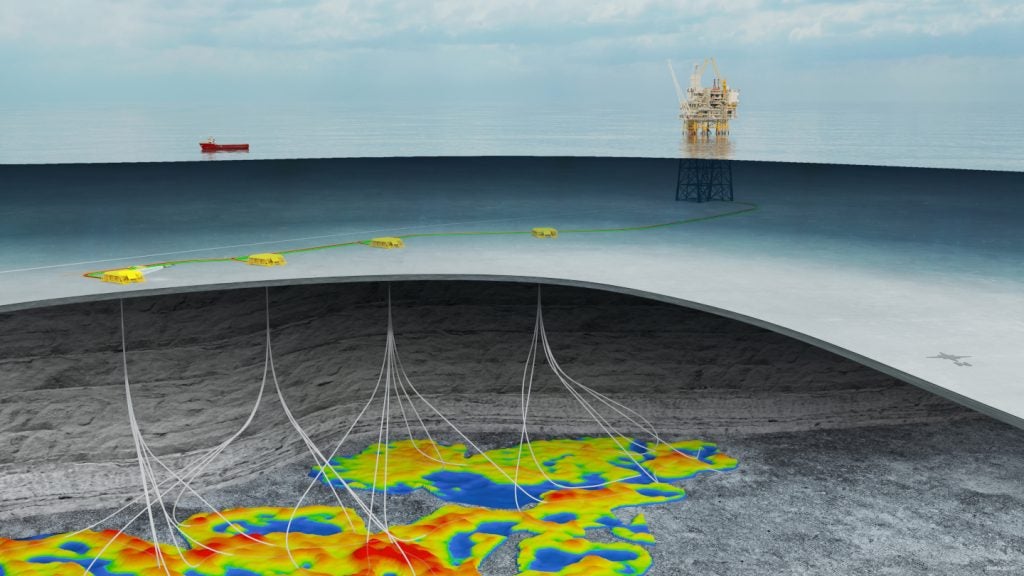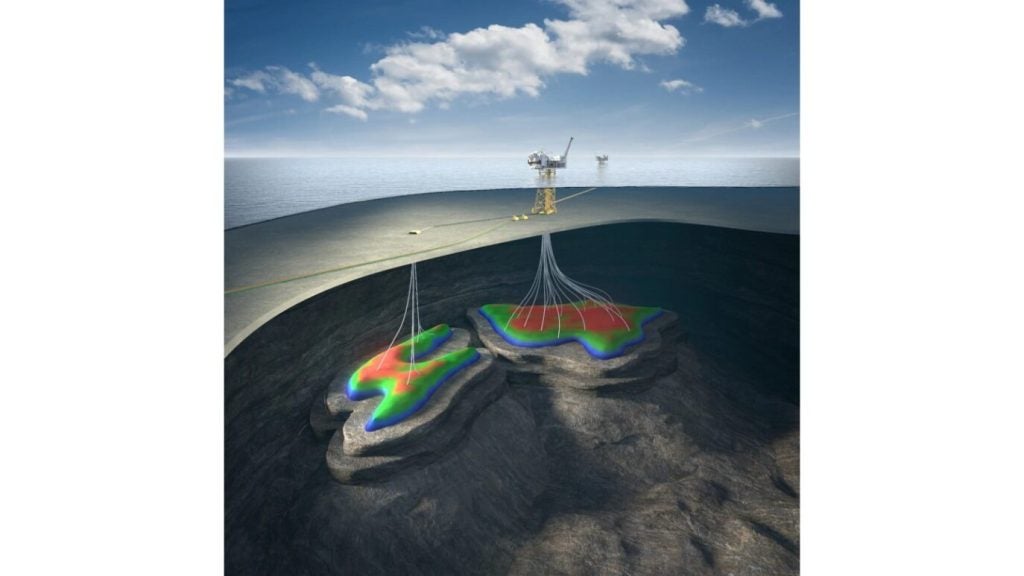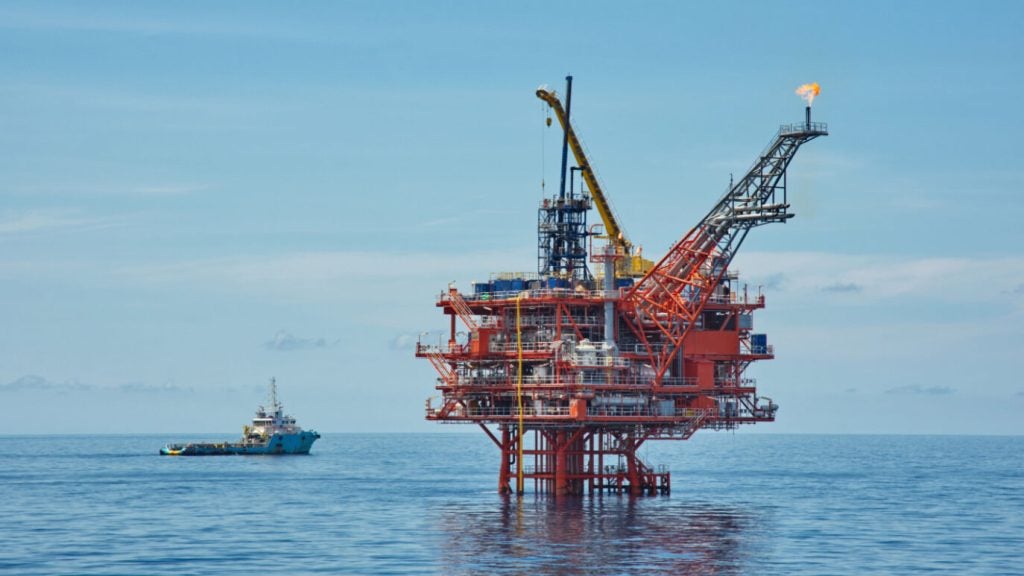The oil and gas industry continues to be a hotbed of innovation, with activity driven by the need for greater safety and productivity, and growing importance of technologies such as IoT, big data, and AI. In the last three years alone, there have been over 534,000 patents filed and granted in the oil & gas industry, according to GlobalData’s report on Internet of Things in Oil & Gas: Photovoltaic drones. Buy the report here.
However, not all innovations are equal and nor do they follow a constant upward trend. Instead, their evolution takes the form of an S-shaped curve that reflects their typical lifecycle from early emergence to accelerating adoption, before finally stabilising and reaching maturity.
Identifying where a particular innovation is on this journey, especially those that are in the emerging and accelerating stages, is essential for understanding their current level of adoption and the likely future trajectory and impact they will have.
150+ innovations will shape the oil & gas industry
According to GlobalData’s Technology Foresights, which plots the S-curve for the oil & gas industry using innovation intensity models built on over 256,000 patents, there are 40+ innovation areas that will shape the future of the industry.
Within the emerging innovation stage, robotic drilling machines and digital twins are disruptive technologies that are in the early stages of application and should be tracked closely. Wellbore drilling optimisation, automated drilling tools, and pressure sensing flow actuator are some of the accelerating innovation areas, where adoption has been steadily increasing. Among maturing innovation areas are combined cycle power plants and smart climate control systems, which are now well established in the industry.
Innovation S-curve for Internet of Things in the oil & gas industry
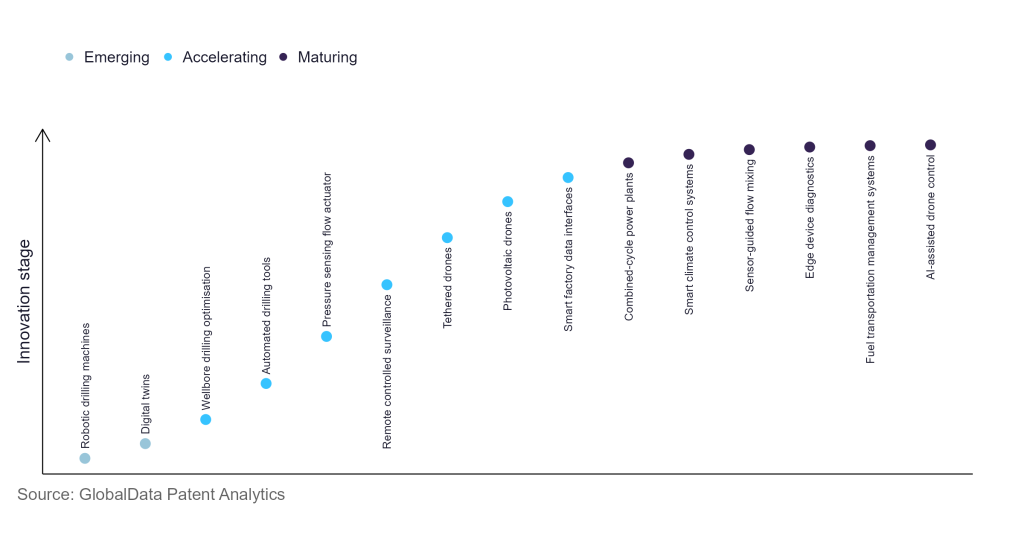
Photovoltaic drones is a key innovation area in Internet of Things
Solar-powered drones have solar cells to store the sun's energy during day for propulsion power and to perform onboard electronic operations. Solar energy is also used to charge the battery that helps drones to fly under clouds or at night.
GlobalData’s analysis also uncovers the companies at the forefront of each innovation area and assesses the potential reach and impact of their patenting activity across different applications and geographies. According to GlobalData, there are 10+ companies, spanning technology vendors, established oil & gas companies, and up-and-coming start-ups engaged in the development and application of photovoltaic drones.
Key players in photovoltaic drones – a disruptive innovation in the oil & gas industry
‘Application diversity’ measures the number of different applications identified for each relevant patent and broadly splits companies into either ‘niche’ or ‘diversified’ innovators.
‘Geographic reach’ refers to the number of different countries each relevant patent is registered in and reflects the breadth of geographic application intended, ranging from ‘global’ to ‘local’.
Patent volumes related to photovoltaic drones
| Company | Total patents (2021 - 2023) | Premium intelligence on the world's largest companies |
| Chugoku Electric Power | 25 | Unlock Company Profile |
| Korea Electric Power | 18 | Unlock Company Profile |
| Mitsubishi Heavy Industries | 10 | Unlock Company Profile |
| China Southern Power Grid | 10 | Unlock Company Profile |
| General Electric | 8 | Unlock Company Profile |
| Ebara | 8 | Unlock Company Profile |
| H3 Dynamics Holdings | 7 | Unlock Company Profile |
| Daicel | 7 | Unlock Company Profile |
| Verity Studios | 6 | Unlock Company Profile |
| Neontech | 5 | Unlock Company Profile |
| Oceaneering International | 5 | Unlock Company Profile |
Source: GlobalData Patent Analytics
Leading patent filers for photovoltaic drones include Chugoku Electric Power, Korea Electric Power and Daicel. Photovoltaic drones are being deployed for a variety of applications in the oil and gas industry, including for inspection of offshore platforms, refining equipment, leak detection in pipelines, emergency response, and material handling.
Drones have a critical role to play across many industries, including in oil & gas. Drone-based imaging, sensing, and data transmission are revolutionising these industries. Photovoltaic drones will further augment this adoption and lead to newer use cases.
To further understand how Internet of Things is disrupting the oil & gas industry, access GlobalData’s latest thematic research report on Internet of Things in Oil & Gas (2021).
Premium Insights
From

The gold standard of business intelligence.
Blending expert knowledge with cutting-edge technology, GlobalData’s unrivalled proprietary data will enable you to decode what’s happening in your market. You can make better informed decisions and gain a future-proof advantage over your competitors.



